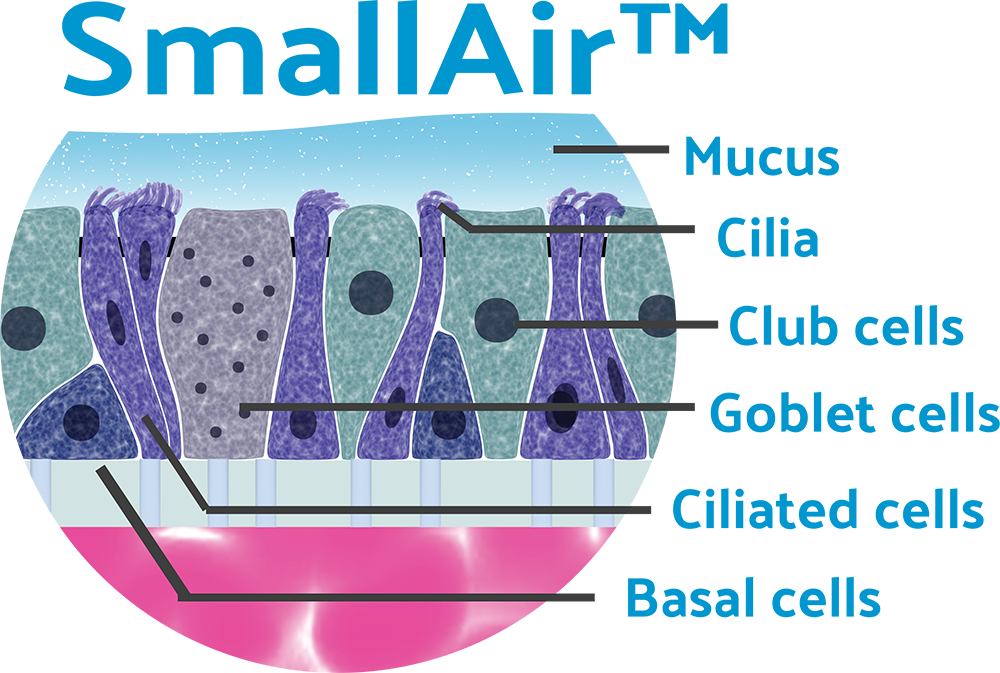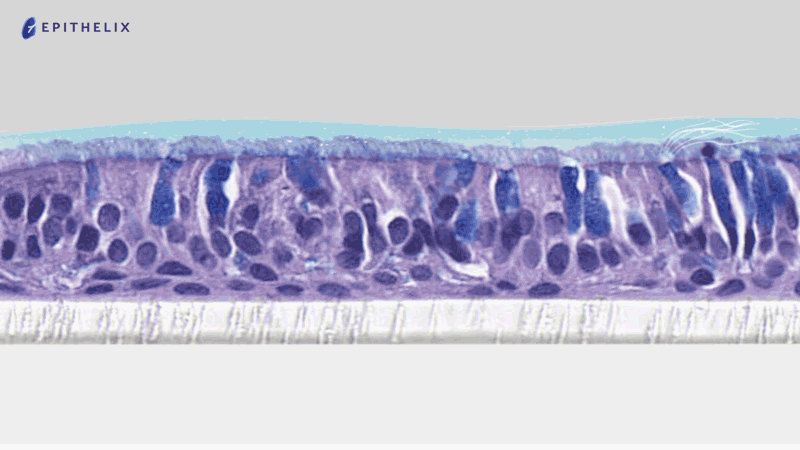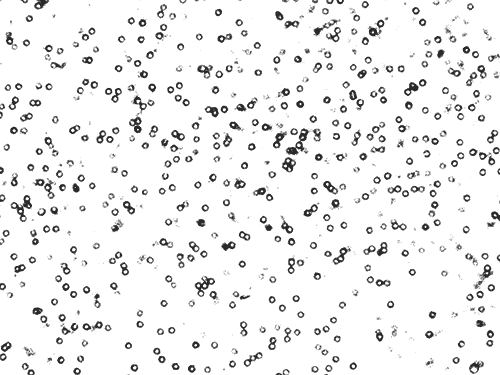SmallAir™ is an in vitro tissue model of the human lower airway epithelium (bronchiolar region after the 5th division of the airway) cultured at the air liquid interface (ALI). It is a powerful and predictive model for in vitro research and tests. SmallAir™ tissue is mainly composed of the following cell types:
- Basal cells (progenitor cells)
- Club cells (cuboidal cell, known to be metabolically active cells)
- Ciliated cells (with active cilia)
- Goblet cells (present in low proportion, mucus producing cells)








